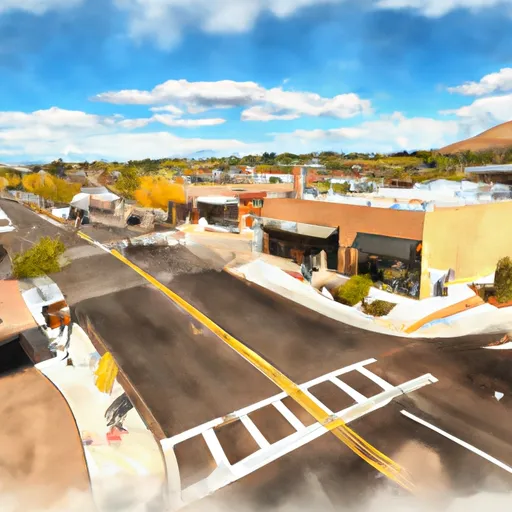-
 Snoflo Premium
Snoflo Premium
Get unlimited access to all our content
With no Ad interruptions! - Start Your Free Trial Login with existing account
Colorado-City
Eden Index
Climate
9.0
•
Recreation
2.9
•
Community
1.3
•
Safeguard
5.0/10

Colorado City is a small town located in Mohave County, Arizona, with a semi-arid climate characterized by hot summers and mild winters. The area receives very little precipitation, with an average annual rainfall of only 8 inches, and is prone to droughts. The water supply for the town comes from underground wells and is treated before distribution to the community. The Virgin River runs nearby and offers opportunities for fishing and hiking. There are also several parks in the area, including Honeymoon Trail Park and Jacob Hamblin Park, which offer opportunities for picnicking, camping, and hiking. The nearby Canaan Mountain Wilderness Area offers further opportunities for outdoor recreation, including hiking and rock climbing.
What is the Eden Index?
The Snoflo Eden Index serves as a comprehensive rating system for regions, evaluating their desirability through a holistic assessment of climate health, outdoor recreation opportunities, and natural disaster risk, acknowledging the profound impact of these factors on livability and well-being.
Climate Health Indicator (CHI): 9.0
Colorado-City receives approximately
343mm of rain per year,
with humidity levels near 52%
and air temperatures averaging around
13°C.
Colorado-City has a plant hardyness factor of
7, meaning
plants and agriculture in this region tend to thrive during the non-winter months.
By considering the ideal temperature range, reliable water supplies, clean air, and stable seasonal rain or snowpacks, the Climate Health Indicator (CHI) underscores the significance of a healthy climate as the foundation for quality living.
A healthy climate is paramount for ensuring a high quality of life and livability in a region, fostering both physical well-being and environmental harmony. This can be characterized by ideal temperatures, reliable access to water supplies, clean air, and consistent seasonal rain or snowpacks.
Weather Forecast
Streamflow Conditions
Lower Colorado-Lake Mead
Area Rivers
Lower Colorado-Lake Mead
Snowpack Depths
Lower Colorado-Lake Mead
Reservoir Storage Capacity
Lower Colorado-Lake Mead
Groundwater Levels
Recreational Opportunity Index (ROI): 2.9
The Recreational Opportunity Index (ROI) recognizes the value of outdoor recreational options, such as parks, hiking trails, camping sites, and fishing spots, while acknowledging that climate plays a pivotal role in ensuring the comfort and consistency of these experiences.
Access to outdoor recreational opportunities, encompassing activities such as parks, hiking, camping, and fishing, is crucial for overall well-being, and the climate plays a pivotal role in enabling and enhancing these experiences, ensuring that individuals can engage in nature-based activities comfortably and consistently.
Camping Areas
| Campground | Campsites | Reservations | Toilets | Showers | Elevation |
|---|---|---|---|---|---|
| Watchman - Zion National Park | 170 | 3,918 ft | |||
| South - Zion National Park | 180 | 3,962 ft | |||
| Lava Point - Zion National Park | 6 | 7,811 ft | |||
| Navajo Lake | 15 | 9,107 ft | |||
| Te - Ah | 41 | 9,189 ft |
Nearby Fishing
Catastrophe Safeguard Index (CSI):
The Catastrophe Safeguard Index (CSI) recognizes that natural disaster risk, encompassing floods, fires, hurricanes, and tornadoes, can drastically affect safety and the overall appeal of an area.
The level of natural disaster risk in a region significantly affects safety and the overall livability, with climate change amplifying these risks by potentially increasing the frequency and intensity of events like floods, fires, hurricanes, and tornadoes, thereby posing substantial challenges to community resilience and well-being.
Community Resilience Indicator (CRI): 1.3
The Community Resilience Indicator (CRI) recognizes that education, healthcare, and socioeconomics are crucial to the well-being of a region. The CRI acknowledges the profound impact of these elements on residents' overall quality of life. By evaluating educational resources, healthcare accessibility, and economic inclusivity, the index captures the essential aspects that contribute to a thriving community, fostering resident satisfaction, equity, and social cohesion.

